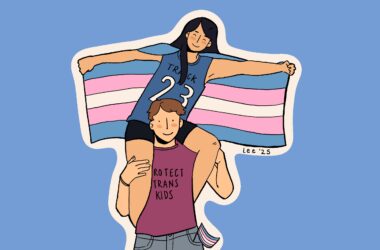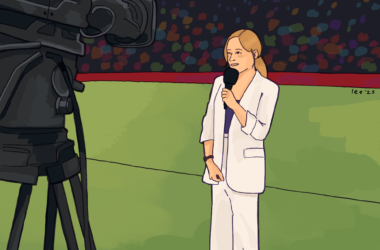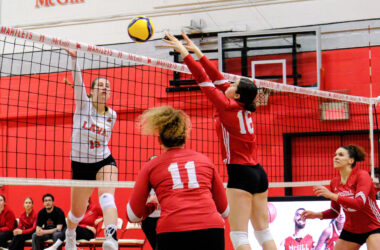On Sept. 4, ESPN The Magazine released the 11th edition of “The Body Issue.” This year’s issue boasts 17 covers, all featuring world-renowned athletes completely nude.
The artfully-shot photographs are meant to celebrate these athletes and the bodies that allow them to perform at the highest level. The accompanying interviews frequently speak to athletes’ personal struggles with body image and their journeys to feeling comfortable in their own skin. A common conclusion for many of the athletes is that their body has allowed them to pursue the sport that they love at a professional level, and they have, therefore, learned to be thankful for both the function and aesthetics of their bodies.
“I feel really accepting of the things I used to be insecure about,” American gymnast Kaetlyn Ohashi said. “I have gone through eating disorders and body shaming and here I am today doing this shoot.”
Ohashi’s interview accompanies a series of photographs of her doing the splits and other physically impressive feats that most of us can only dream of—and she is not the only one. Many of the photoshoots centre on the athletes’ skills and capabilities, with the cover stars holding barbells, basketballs, and hockey sticks. Framing the photoshoots around the function rather than the aesthetics of an athlete’s body is important in an era where eating disorders and body dysmorphia have become increasingly common. It would be easy for the magazine to ignore issues of inclusivity and diversity, especially regarding size and ability. But, “The Body Issue” notably includes athletes from a wide range of sports with different body shapes as well as athletes with physical disabilities.
This year’s issue features Scout Bassett, an American Paralympic long-jumper and sprinter. Bassett’s prosthetic leg is on display in every one of the 12 photos in the online gallery.
“I get devastated when I hear [that a girl doesn’t want to run because the prosthetics are ugly],” Bassett said. “I tell them, ‘but it’s how it makes you feel.’ That’s a problem, and it’s a huge part of why I did ‘The Body Issue.”
Size remains another significant barrier to entry in many athletic environments. When Nike began using plus-sized mannequins, the backlash included comments on how fat people would not be using these clothes to actually do sports, implying that people above a certain weight or body size cannot or do not participate in athletics. Most people have some notion of what they believe to be an ideal body for an athlete, and visible abs are a part of that mental image more often than not.
In past years, “The Body Issue” has included, athletes not only with visible disabilities, but a diversity of body shapes and sizes as well. This includes athletes who would be considered plus-size by clothing companies. Making all bodies in athletics visible, regardless of size or ability, demonstrates that sports do not need to be exclusive to those with stereotypically athletic bodies.
Broader social issues, particularly the commodification of bodies in professional sports should not be ignored when discussing “The Body Issue”. Racialized and lower income groups, whose athletic ability is often a route toward upward mobility, whether through gaining a higher education with an athletic scholarship or through professional sports, should also not be left out of the conversation. It also brings up questions of injuries and athletes’ physical and mental health, which can be ignored in order for sponsors or teams to continue to profit from their performance.
Like many industries, the sports industry is built around human bodies, which brings up issues of race, gender, and poverty that cannot be ignored. But, showcasing all bodies as capable and valid is a definite positive for an industry that many still see as exclusive.








